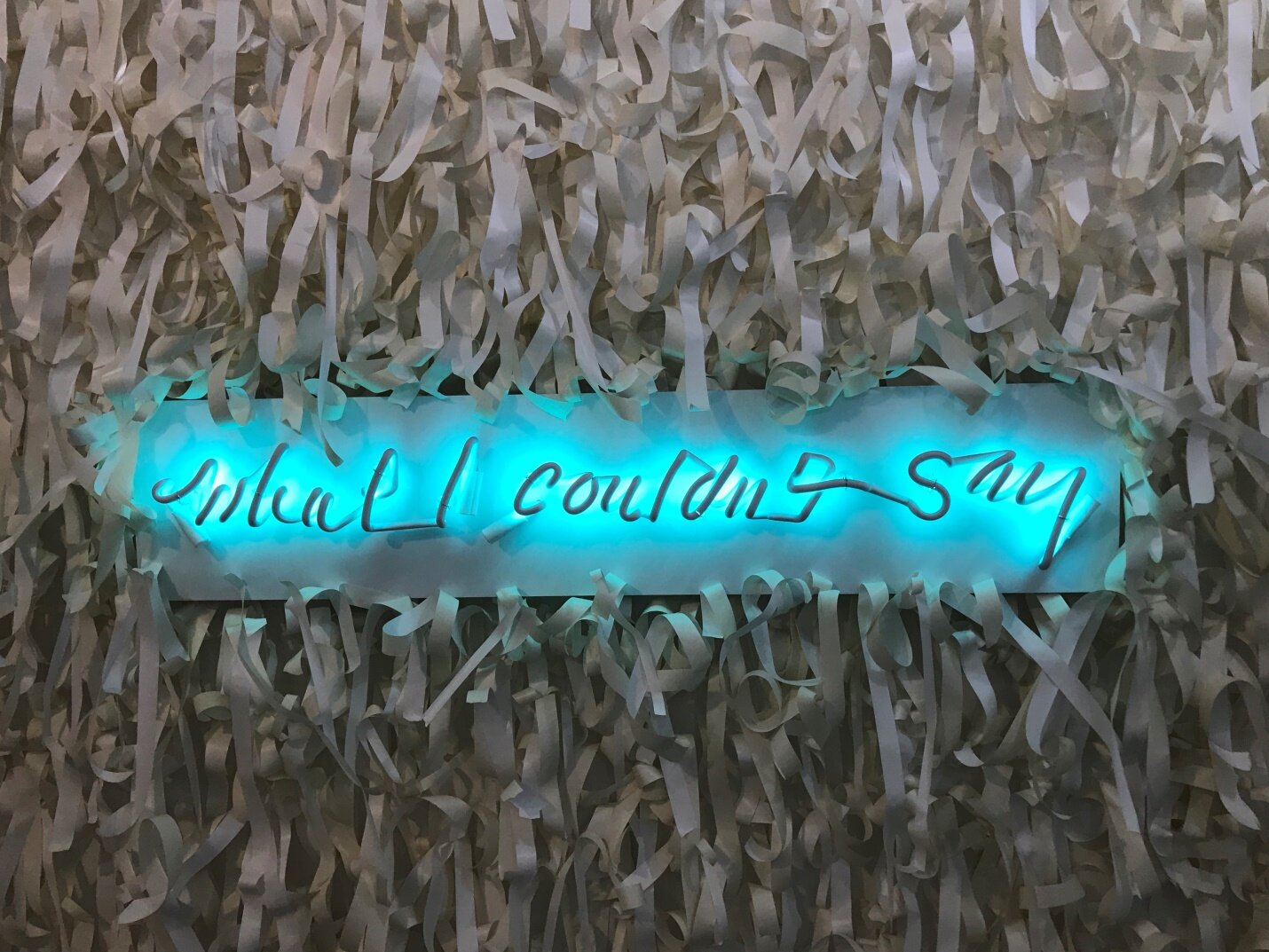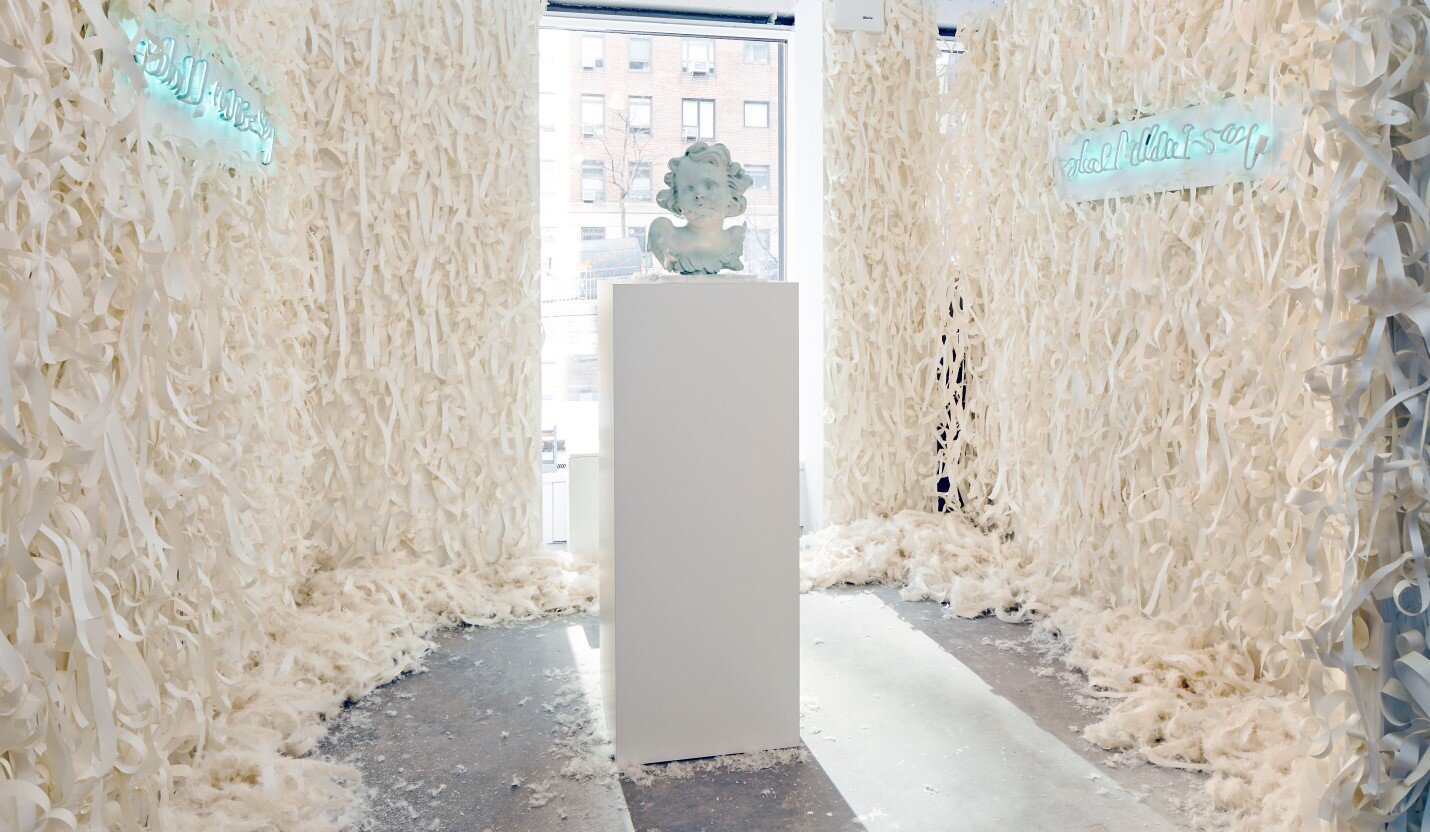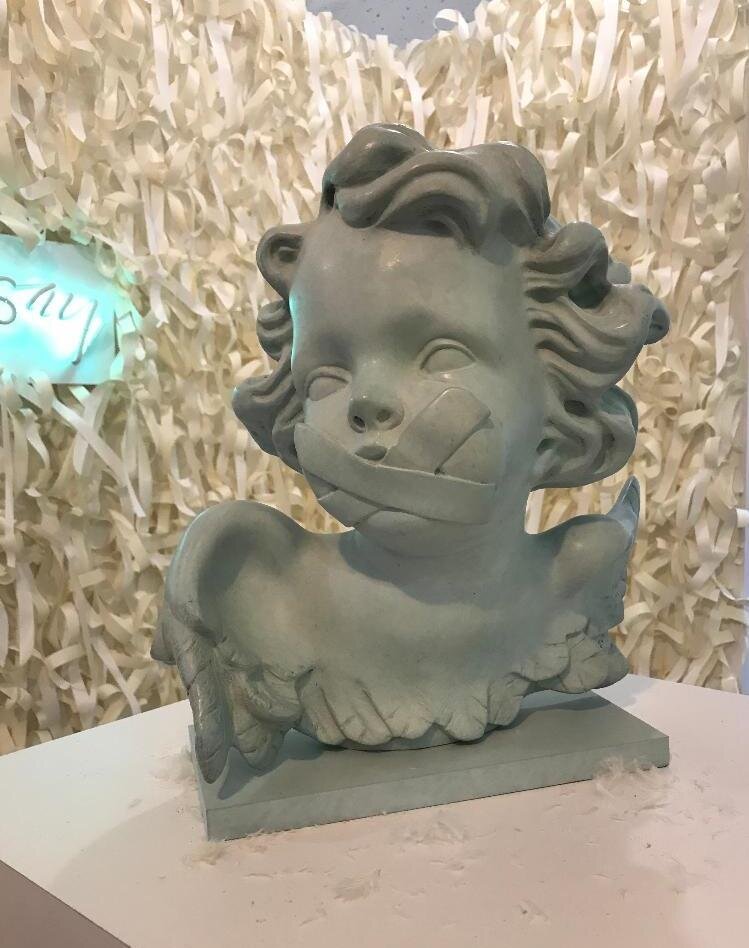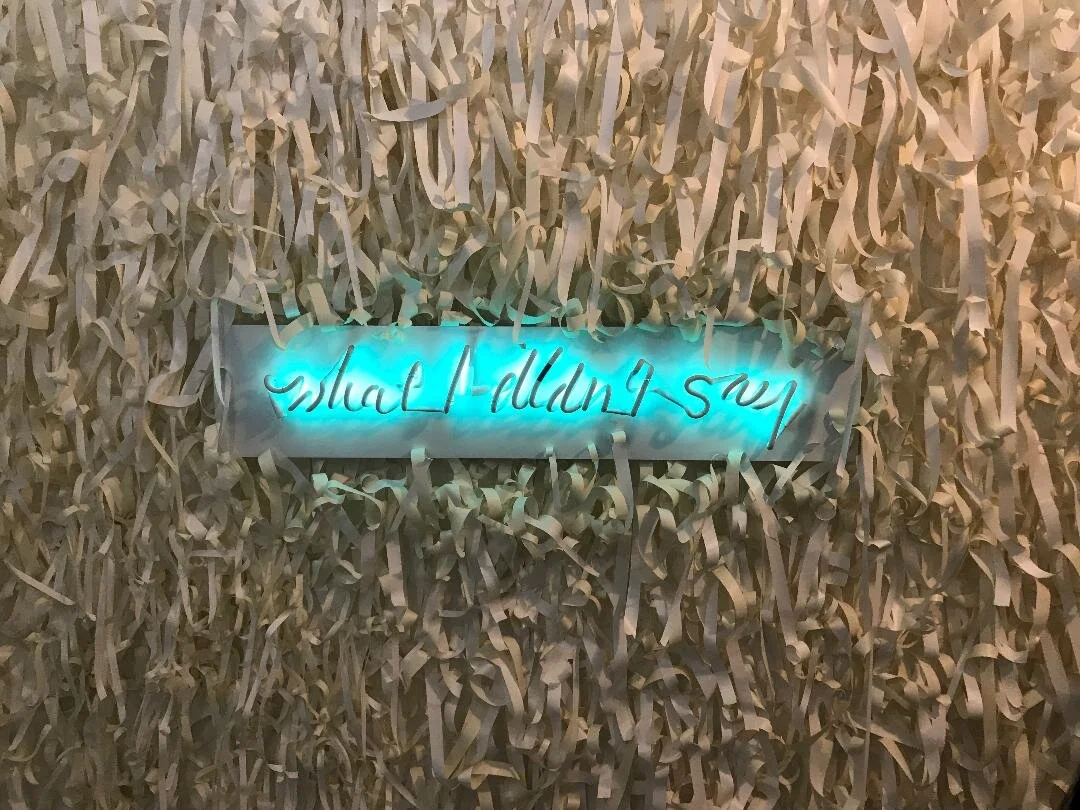Rachel Lee Hovnanian:
“Who Speaks?”
Rachel Lee Hovnanian
Taped Shut
Curated by
Janny Mushkin Goldman &
Jessica Davidson
Spring/Break Art Show 2019
Fact and Fiction
866 United Nations Plaza
New York, New York
March 5 — 11, 2019
Exhibition Review | April 2019 | Raphy Sarkissian
Rachel Lee Hovnanian, Taped Shut, installation view. Courtesy of the artist and Leila Heller Gallery.
In this provocatively devised project entitled Taped Shut by Rachel Lee Hovnanian, the visitor is invited to imitate the visually silenced condition of a cherub bust perched atop a plinth by sealing her or his own mouth through artist tape that conceals the lips. While such a brief act of the visitor-cum-collaborator was the beginning and end of the artist-audience transaction, a smartphone image that captures the speechless condition of the participant standing near the bust of the mutant bronze angel acts as a record to dwell upon the formal and conceptual parameters contrived within Hovnanian’s theatrical setup, where shades of white inundated the confined gallery space containing various mediums and materials, including artist tape entrenching the walls and down feather that floated around the floor and atop the sculpture’s pedestal, along with two neon signs.
While muteness was the visual pronouncement of the cherub of Hovnanian, the textuality of the two neon signs hovering on opposite walls and bracketing the angel gave way to a series of virtually endless references: from Tracey Emin’s “handwritten” neon signs that address love and lust (I promise to love you, 2010) to the print-form neon texts of Joseph Kosuth that democratically equipoise verbal and visual forms of representation (Five Words in Green Neon, 1965). In turn, the carnival of unrolled artist tape adorning the walls of the exhibition space, while epitomizing the excess of silence through their assumed iconicity of suppressors of discourse, simultaneously revealed themselves to the Modernist eye as tangible ghosts of the splattered lines of Jackson Pollock. The adhesive strips of tape of Hovnanian that adorned the partition walls of the exhibition space thus flooded the beholder’s field of vision, acting as translations of Pollock’s drips into transitory relief sculpture. Conversely, it was the down feather deluging the gallery floor that usurped the clinical purity of the artist tape, neon lights and enameled bronze cherub bust, an assemblage whose combined palette was restricted to shades of white and light green. Symbolic of trust, wisdom, honor, strength and freedom, the feathers of the installation offered the viewer a plurality of open interpretations. Acting not only as an allegory of freedom of speech, the proverbial phrase “birds of a feather flock together” was inescapable in Hovnanian’s sly deployment of modern and contemporary parameters of art in service of progressive sociopolitical ends.
Rachel Lee Hovnanian, WICS, 2019. Neon and artist tape. Courtesy of the artist and Leila Heller Gallery.
As the performance of the participant within Hovnanian’s installation evokes the recent media attention of allegations of misconduct of political, public, television and Hollywood figures, the exhibition invites the viewer to reflect upon the confines of language and concurrently thought on cultural and individual levels. The two sentences of Hovnanian, rendered through light green neon tubes as somewhat hasty scripts, announce “what I couldn’t say” and “what I didn’t say” (respectively entitled WICS and WIDS on the checklist). While at first these sentences appear as verbal pronouncements of the silent cherub, the pronoun “I” would instantly shift its signified value, referring to the reader, viewer or participant, in as much as it would also echo voices of those individuals who have been victimized through the misconduct of celebrities and political figures or voices of those individuals that language would otherwise label as “commoners.” As Hovnanian’s installation does not contain any explicit references to the arenas of politics or mass media, it unreservedly dissolves social hierarchies, as much as it expands the very act of speech from a specific point of reference to that of semantics—the formation of meaning.
Thus along with the implications of politics and social conduct, Taped Shut interrogates the mechanism of language itself, a categorical mechanism that needs to be continually contravened. As Michel Foucault notes, “By a much longer and much more unexpected path, we are led back to the place that Nietzsche and Mallarmé signposted when the first asked: Who speaks?, and the second saw this glittering answer in the Word itself. The question as to what language is in its being is once more of the greatest urgency.”[1]
Rachel Lee Hovnanian, installation detail of Taped Shut, 2019. Patinated bronze bust, plinth, neon, masking tape and feather. Courtesy of the artist and Leila Heller Gallery.
Over the past two decades, the work of Hovnanian has questioned myths of beauty and social norms through such iconic themes as the narcissus flower, pageant winner, wreathed trophies, tiaras, “perfect babies,” genetically modified cereals and smartphones that have the potency to suppress the essential experiences of life. Within the practice of Hovnanian, artmaking is recurrently a springboard to social discourse and not mere exultation of form.
For this project, Hovnanian transfigures the Western religious icon of the angel into a forcibly silenced entity that is poignantly nesting within an environment furnished at once by masking tape (a device of silence) and by textual utterances (devices that break silence in order to convey the message of urgency for social reform). By framing the exhibition space through participatory art, Taped Shut of Hovnanian cunningly redefines artmaking as a collaborative extension of speech, history, ideology and praxis in service of social righteousness. As an enterprise, Taped Shut proposes the function of art as a method of constructively reconfiguring the parameters of the social fabric—first and foremost by having the individual address language itself, along with her or his own capacity of freedom of thought, truthful speech, self-expression and justice. WICS and WIDS of Hovnanian hence fittingly call forth the individual’s liberty upon the platform of social discourse, echoing Fearless Speech of Michel Foucault.
Rachel Lee Hovnanian, WIDS, 2019. Neon and artist tape. Courtesy of the artist and Leila Heller Gallery.
That “fearless speech,” in light of the Me Too Movement that entered social media in 2006 as a talisman and has gone viral since late 2017 through its hashtag #MeToo, can be read as the central message of this project of Hovnanian. Having transformed the exhibition booth into a virtual shrine for the sexually-harassed and sexually-assaulted victims regardless of age, nationality, gender, sexuality, social rank and social condition, the masking tapes flooding the space of Taped Shut at once encapsulate the silent history of those victims and advocate termination of silence. The autonomy of form within the context of this exhibition has therefore become disrupted and reversed, as the medium of tape is in service of a content that enunciates #MeToo—no longer an agent of blind auto-reflexivity, no longer restricting itself to the formalist purity of high modernity. In this manner, Taped Shut circumvents art’s univocal doxa.
This incisive project of Rachel Lee Hovnanian thus redirects artmaking toward critical social action in order to interrogate the limitations of linguistic categorizations of gender and desire as much as to annihilate silence and marginality insofar as sexual misconduct, harassment and assault are concerned. Herein art and social justice have become imbricated.
Note
Michel Foucault, The Order of Things: An Archaeology of Human Sciences (New York: Vintage Books, 1973), p. 382. See also Foucault, Fearless Speech, ed. Joseph Pearson (MA: MIT Press, 2001).
Rachel Lee Hovnanian is represented by Leila Heller Gallery in New York and Dubai.



